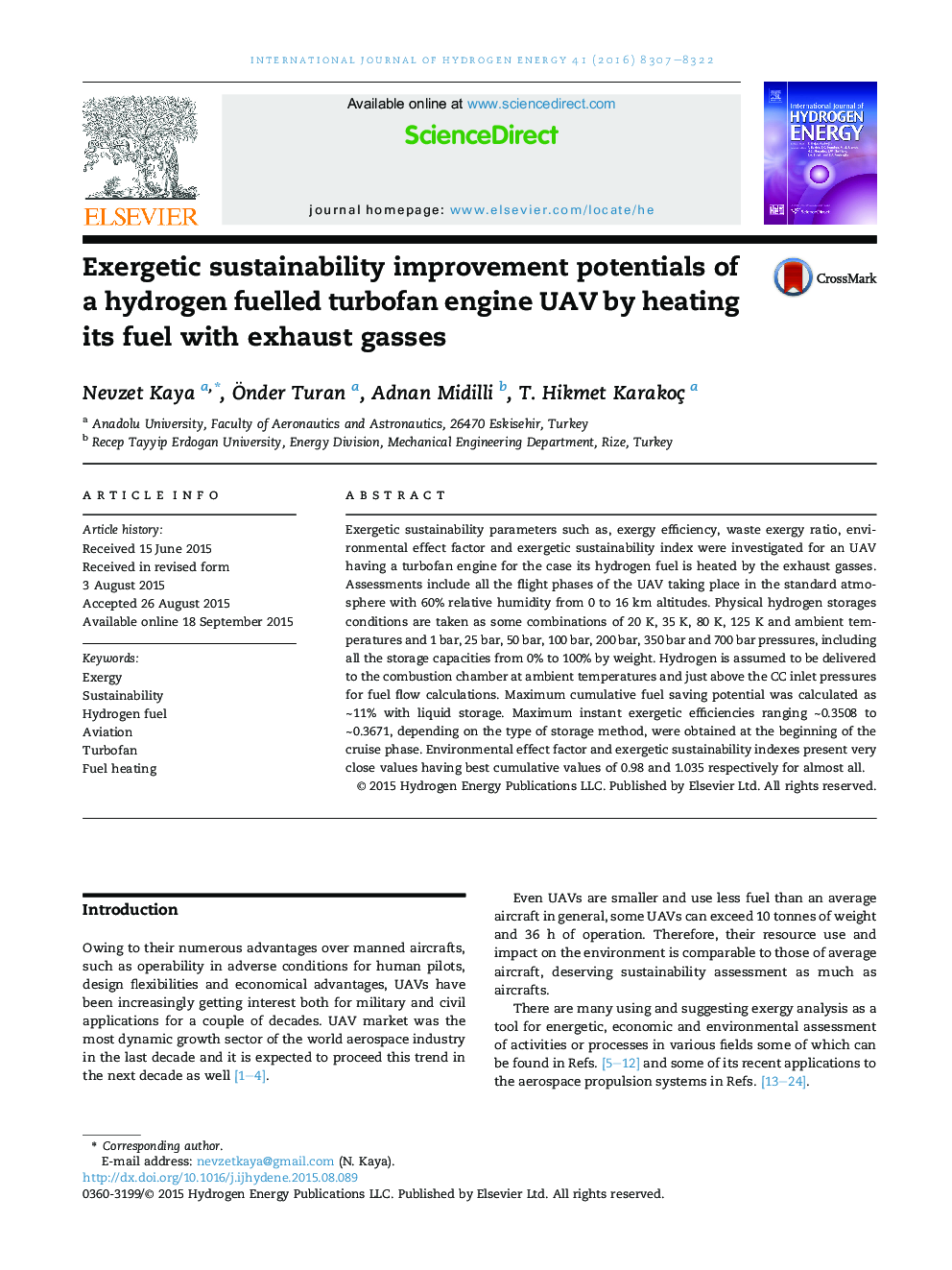| Article ID | Journal | Published Year | Pages | File Type |
|---|---|---|---|---|
| 1277327 | International Journal of Hydrogen Energy | 2016 | 16 Pages |
•Achievable flight times with 0–100% storage capacities were calculated.•Fuel savings and sustainability improvement potentials were calculated.•Up to 11% fuel savings with fuel heating is possible.•Low temperature low pressure storages are the best for exergetic sustainability.•Exergy saving with fuel heating is higher than its physical exergy.
Exergetic sustainability parameters such as, exergy efficiency, waste exergy ratio, environmental effect factor and exergetic sustainability index were investigated for an UAV having a turbofan engine for the case its hydrogen fuel is heated by the exhaust gasses. Assessments include all the flight phases of the UAV taking place in the standard atmosphere with 60% relative humidity from 0 to 16 km altitudes. Physical hydrogen storages conditions are taken as some combinations of 20 K, 35 K, 80 K, 125 K and ambient temperatures and 1 bar, 25 bar, 50 bar, 100 bar, 200 bar, 350 bar and 700 bar pressures, including all the storage capacities from 0% to 100% by weight. Hydrogen is assumed to be delivered to the combustion chamber at ambient temperatures and just above the CC inlet pressures for fuel flow calculations. Maximum cumulative fuel saving potential was calculated as ∼11% with liquid storage. Maximum instant exergetic efficiencies ranging ∼0.3508 to ∼0.3671, depending on the type of storage method, were obtained at the beginning of the cruise phase. Environmental effect factor and exergetic sustainability indexes present very close values having best cumulative values of 0.98 and 1.035 respectively for almost all.
Graphical abstractFigure optionsDownload full-size imageDownload as PowerPoint slide
